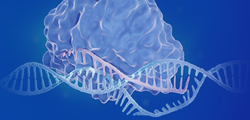-
REAGENT SERVICES
Hot!
-
Most Popular Services
-
Molecular Biology
-
Recombinant Antibody/Protein
-
Reagent Antibody
-
CRISPR Gene Editing
-
DNA Mutant Library
-
IVT RNA and LNP Formulations
-
Oligo Synthesis
-
Peptides
-
Cell Engineering
-
- Gene Synthesis FLASH Gene
- GenBrick™ Up to 200kb
- Gene Fragments Up to 3kb now
- Plasmid DNA Preparation Upgraded
- Cloning and Subcloning
- ORF cDNA Clones
- mRNA Plasmid Solutions New!
- Cell free mRNA Template New!
- AAV Plasmid Solutions New!
- Mutagenesis
- GenCircle™ Double-Stranded DNA New!
- GenSmart™ Online Tools
-
-
PRODUCTS
-
Most Popular Reagents
-
 Instruments
Instruments
-
Antibodies
-
ELISA Kits
-
Protein Electrophoresis and Blotting
-
Protein and Antibody Purification
-
Recombinant Proteins
-
Molecular Biology
-
Stable Cell Lines
-
Cell Isolation and Activation
-
 IVD Raw Materials
IVD Raw Materials
-
 Therapy Applications
Therapy Applications
-
Resources
-
- All Instruments
- Automated Protein and Antibody Purification SystemNew!
- Automated Plasmid MaxiprepHot!
- Automated Plasmid/Protein/Antibody Mini-scale Purification
- eBlot™ Protein Transfer System
- eStain™ Protein Staining System
- eZwest™ Lite Automated Western Blotting Device
- CytoSinct™ 1000 Cell Isolation Instrument
-
- Pharmacokinetics and Immunogenicity ELISA Kits
- Viral Titration QC ELISA Kits
- -- Lentivirus Titer p24 ELISA KitHot!
- -- MuLV Titer p30 ELISA KitNew!
- -- AAV2 and AAVX Titer Capsid ELISA Kits
- Residual Detection ELISA Kits
- -- T7 RNA Polymerase ELISA KitNew!
- -- BSA ELISA Kit, 2G
- -- Cas9 ELISA KitHot!
- -- Protein A ELISA KitHot!
- -- His tagged protein detection & purification
- dsRNA ELISA Kit
- Endonuclease ELISA Kit
- COVID-19 Detection cPass™ Technology Kits
-
- Automated Maxi-Plasmid PurificationHot!
- Automated Mini-Plasmid PurificationNew!
- PCR Reagents
- S.marcescens Nuclease Benz-Neburase™
- DNA Assembly GenBuilder™
- Cas9 / Cas12a / Cas13a Nucleases
- Base and Prime Editing Nucleases
- GMP Cas9 Nucleases
- CRISPR sgRNA Synthesis
- HDR Knock-in Template
- CRISPR Gene Editing Kits and Antibodies
-
![AmMag™ Quatro Automated Plasmid Purification]() AmMag™ Quatro automated plasmid purification
AmMag™ Quatro automated plasmid purification
-
![Anti-Camelid VHH]() MonoRab™ Anti-VHH Antibodies
MonoRab™ Anti-VHH Antibodies
-
![ELISA Kits]() ELISA Kits
ELISA Kits
-
![Precast Gels]() SurePAGE™ Precast Gels
SurePAGE™ Precast Gels
-
![Quatro ProAb Automated Protein and Antibody Purification System]() AmMag™ Quatro ProAb Automated Protein and Antibody Purification System
AmMag™ Quatro ProAb Automated Protein and Antibody Purification System
-
![Target Proteins]() Target Proteins
Target Proteins
-
![AmMag™ Quatro Automated Plasmid Purification]() AmMag™ Quatro automated plasmid purification
AmMag™ Quatro automated plasmid purification
-
![Stable Cell Lines]() Stable Cell Lines
Stable Cell Lines
-
![Cell Isolation and Activation]() Cell Isolation and Activation
Cell Isolation and Activation
-
 IVD Raw Materials
IVD Raw Materials
-
![Quick
Order]() Quick Order
Quick Order
-
![Quick
Order]() Quick Order
Quick Order
- APPLICATIONS
- RESOURCES
- ABOUT US
- SIGN IN My Account SIGN OUT
- REGISTER

![Amino Acid Code Amino Acid Code]()
DNA Related Biological Terms
This Biology terms dictionary provides query services for biology and biochemistry terms. Please enter the biology or biochemistry terms you want to search.
List by Alphabet: A B C D E F G H I J K L M N O P Q R S T U V W X Y Z
DNA Related Biological Terms:
The removal of damaged segments, e.g. pyrimidine dimers, from one strand of double-stranded DNA and its correct resynthesis.
(= DNA fingerprinting (DNA profiling))
(= exonuclease footprinting (DNase footprinting))
double-stranded DNA. (see also double helix (Watson-Crick model))
A method for identification of a protein-binding region in a double-stranded DNA fragment. One 5'-end of the DNA fragment is labelled with 32P and the DNA-fragment-protein complex is treated with a 3'-exonuclease to digest from the 3'-end until it meets the region protected by the DNA-binding protein. The labelled strand is characterized subsequently by its size to indicate the distance of the site of the binding protein from the 5'-end of the fragment. The technique is suitable for localization of a binding site to a specific region of a large DNA fragment, whereas footprinting gives the exact sequence of the binding site of a smaller fragment. (see also footprinting)Revzin, A. (ed.) (1993) footprinting of Nucleic Acid-Protein Complexes, Academic Press, San Diego
Automated DNA sequencing using single-lane sequencing; adaptable to automated data collection.
see quadruplex DNA
DNA that has been isolated from a cell and therefore contains introns, as opposed to cDNA.
A form of triplex DNA characterized by Hoogstein base pairing.Yagil, G. (1991) Crit. Rev. Biochem. Mol. Biol. 26, 475-559; Frank-Kamenetskii, M.D. and Mirkin, S.M. (1995) Annu. Rev. Biochem. 64, 65-95; Vasquez, K.M. and Wilson, J.H. (1998) Trends Biochem. Sci. 23, 4-9
A branched double-stranded DNA structure, a chi-form in which each of four polynucleotide chains is complementary to and base-paired with the 3'-end of one polynucleotide and the 5'-end of another; unlike in a recombination intermediate, the junction cannot migrate (i.e. slide its branch point along the duplex) without breaking many more Watson-Crick base-pair hydrogen bonds as it advances than can re-form behind it. (see also Holliday model)
-
Top Search
-
Hot Glossary
-
Molecular Biology
If you know of any terms that have been omitted from this glossary that you feel would be useful to include, please send detail to the Editorial Office at GenScript: website@genscript.com
If your term is adopted, we will send 1,000 EzCoupon points to your GenScript account.
-




































